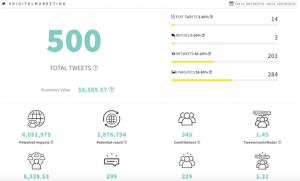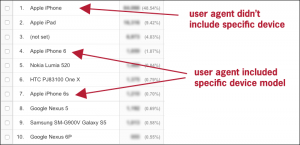Think, for a minute, about how many marketing channels the typical consumer encounters each day. They might wake up, check their smartphone and turn on an Internet radio station while they get ready for work. On their commute, they read their tablet for the latest news while passing dozens of billboard and bus stop ads. While at work, they visit a variety of websites with banner ads and sponsored content, and on their lunch break they log into a handful of social networks with promoted in-stream content and sidebar ads. At home, they might watch some TV, browse the Internet, or explore the app ecosystem on their phone for what’s trending.
The digital consumer’s journey towards selecting and engaging with brands – whether that means making a purchase or recommending them to their social networks – has become increasingly fragmented. In fact, statistics show that the number of digital touchpoints is increasing by 20 percent annually. However, smart marketers can use this to their advantage.
By analyzing the demographics and psychographics of its audience on a single platform – Twitter – a brand can develop a robust cross-channel strategy.
Twitter’s open, real-time nature makes it an ideal network for gathering actionable insights about a brand’s audience. From basic demographics like age, location and income to more nuanced traits like where they shop and what TV shows they watch, Twitter is a goldmine of audience insights just waiting to be tapped.
So how can these insights fuel a cross-channel strategy? Here are some ideas:
- Build loyalty the Starbucks way. From in-store cards that can be loaded with a Tweet to “Frappuccino Happy Hour” that spans text, social and TV, Starbucks is king when it comes to cross-channel. Running loyalty promotions requires a deep understanding of your audience – Starbucks knows which social networks its audience prefers, how they engage with content, and what type of content resonates most.
- Encourage purchases by combining social, search and ads. You know, thanks to social signals gathered on Twitter, that your audience is health-conscious. You even discover that they commonly visit three top health-related websites. So, you develop a cross-channel campaign using social ads, retargeted ads on health websites, and paid search to pull in this audience.
- Expand your reach with lookalike audiences. Lookalike audiences are prospects who will be likely to be interested in your brand, because they share similar traits to your audience on Twitter. By leveraging key demographic and psychographic traits, you can effectively launch a campaign across social, search, display and mobile that will reach this wide, but still targeted, audience.
- Speak to their interests. If you discover that your audience tweets while watching The Bachelor, why not run a Twitter hashtag campaign while it’s airing? Or, you could purchase relevant ads on Twitter and run them only while The Bachelor is live, to capture an audience that is engaging on two channels at once.
Cross-channel strategies are quickly becoming an indispensable tool for digital marketers. Knowing your audience and reaching them wherever they are, with the message they want to engage with, is essential.
Digital & Social Articles on Business 2 Community
(96)






